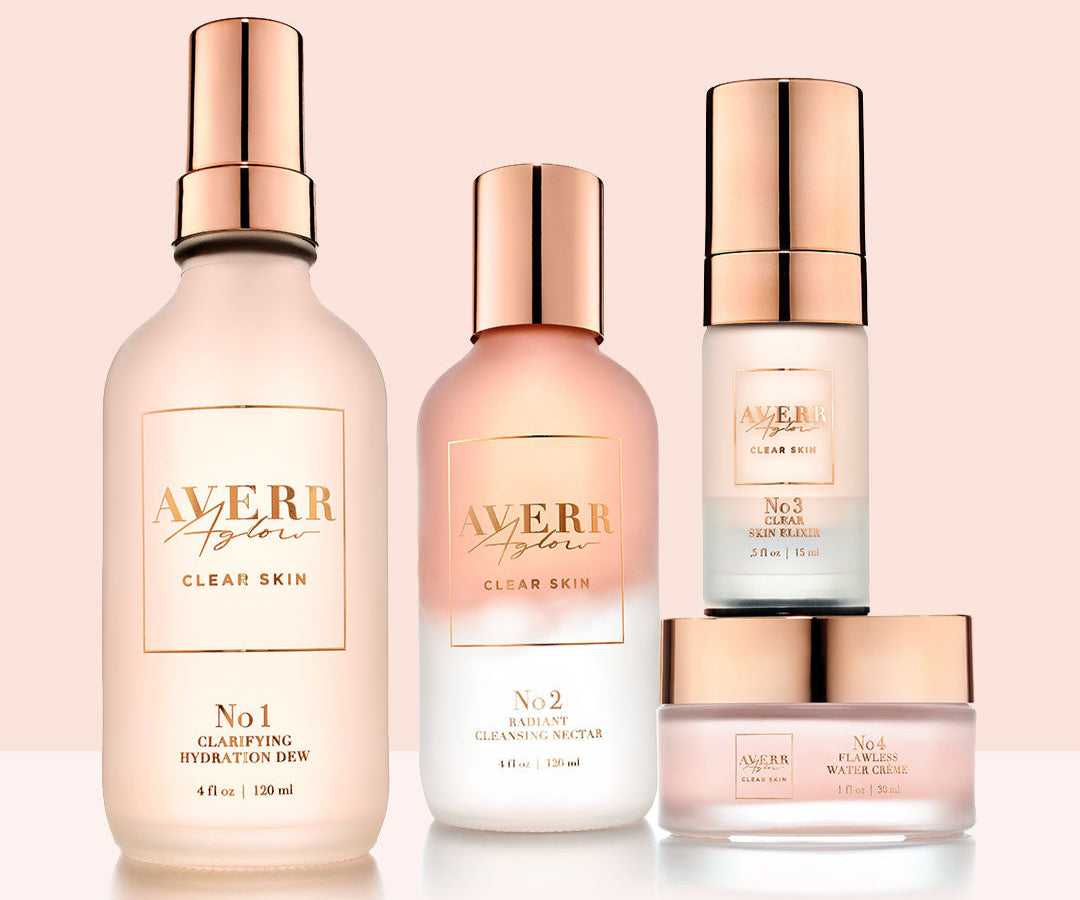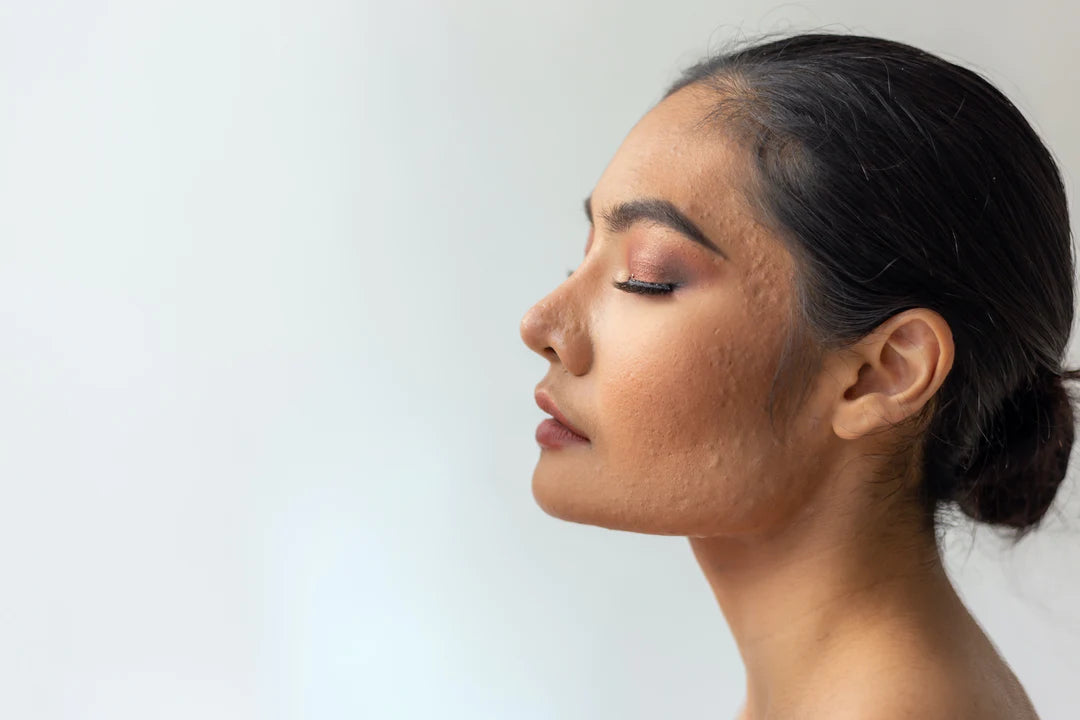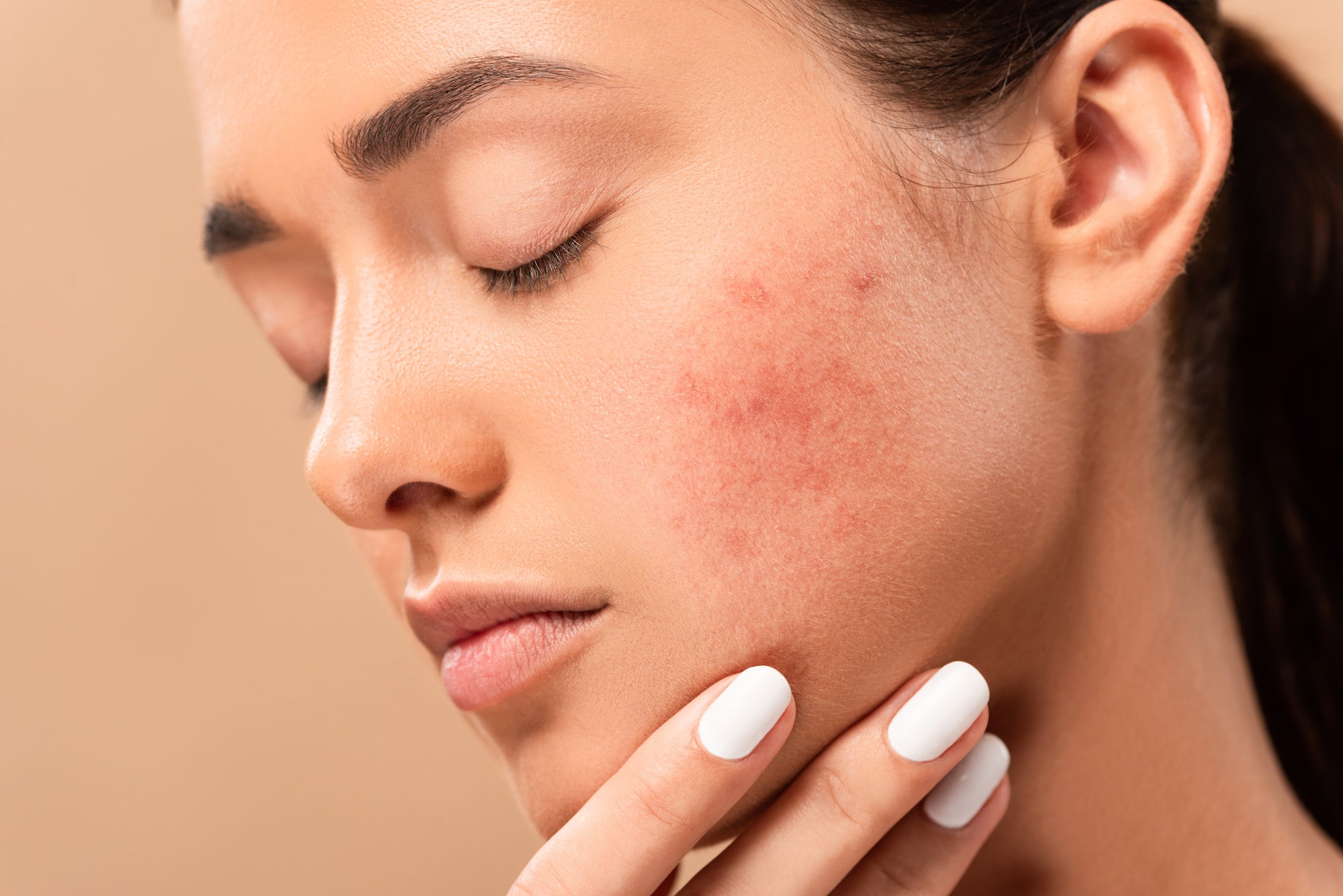
Nodulocystic Acne: The Ins and Outs
What is Nodulocystic Acne?
Nodulocystic acne, also known as nodular cystic acne or cystic acne, is a severe and inflammatory form of acne vulgaris. It is characterized by the formation of large, deep nodules or cysts beneath the surface of the skin. This type of acne is more extensive and can be more painful than milder forms, such as whiteheads or blackheads.
Key features of nodulocystic acne include:
- Nodules: Nodules are large, solid, and often painful bumps that develop beneath the skin. These are deeper than typical pimples and can be felt as hard, inflamed lumps.
- Cysts: Cysts are fluid-filled lesions that are deeper and larger than pustules or papules. They can be tender to the touch and may cause significant discomfort.
- Inflammation: Nodulocystic acne is highly inflammatory, leading to redness, swelling, and tenderness in the affected areas. The inflammation can extend deep into the skin layers.
- Scarring: Due to the depth and severity of nodulocystic acne lesions, scarring is a common outcome. As the lesions heal, they may leave behind depressed or raised scars on the skin.
- Persistence: Nodulocystic acne lesions often persist for a longer duration than milder forms of acne. They may be more resistant to topical treatments and can lead to chronic skin issues if not managed properly.
- Location: Nodulocystic acne tends to occur on the face, chest, and back, areas with a higher concentration of sebaceous glands.
- Impact on Quality of Life: Beyond the physical symptoms, nodulocystic acne can significantly impact an individual's emotional well-being and quality of life. The severity of the lesions, potential scarring, and the chronic nature of this type of acne can contribute to emotional distress.
Because nodulocystic acne is a severe and potentially scarring form of acne, it often requires a comprehensive and tailored treatment approach. Dermatologists may recommend a combination of oral medications, such as antibiotics or isotretinoin (a powerful retinoid), along with topical treatments and skincare measures to manage inflammation and prevent scarring.
Nodulocystic Acne vs Cystic Acne vs Nodule Acne
"Nodulocystic acne," "cystic acne," and "nodular acne" are terms often used interchangeably, but they can have subtle differences in their clinical definitions. Here's a breakdown of these terms:
1. Cystic Acne:
- Cystic acne refers to a severe form of acne characterized by the development of cysts beneath the skin's surface. These cysts are fluid-filled, sac-like structures that are often larger and deeper than typical pimples. They are soft to the touch and can be painful. Cystic acne can be highly inflammatory, leading to redness, swelling, and tenderness around the affected areas. Due to the depth of cystic lesions, scarring is a common outcome if not properly managed.
2. Nodular Acne:
- Nodular acne is characterized by the presence of nodules, which are large, solid, and often painful lumps beneath the skin. The nodules are deeper and more significant than regular pimples. They can be felt under the skin's surface and may cause discomfort. Nodular acne is inflammatory, leading to redness and swelling around the affected areas. These lesions can contribute to scarring, particularly if they are manipulated or if the condition is not properly treated.
3. Nodulocystic Acne:
- Nodulocystic acne is a term that combines features of both nodular and cystic acne. It involves the presence of both nodules and cysts, making it a more severe and extensive form of acne. Nodulocystic acne is highly inflammatory, with significant redness, swelling, and tenderness. With this type of acne, scarring is a common outcome due to the depth and severity of lesions.
While these terms are used in various ways, they generally refer to severe forms of acne that involve deeper lesions, inflammation, and an increased risk of scarring.
Causes of Nodulocystic Acne
The causes of nodulocystic acne, a severe and inflammatory form of acne, are multifactorial and can involve a combination of genetic, hormonal, and environmental factors. Here are some key contributors to the development of nodulocystic acne:
- Genetic Predisposition: A family history of severe acne can increase the likelihood of developing nodulocystic acne. Genetic factors can influence skin structure, oil production, and the body's inflammatory response, all of which contribute to acne development.
- Hormonal Fluctuations: Hormonal changes play a significant role in the development of nodulocystic acne. Fluctuations in hormones, particularly androgens like testosterone, can stimulate the sebaceous glands to produce more oil (sebum). Excess sebum production, combined with abnormal skin cell shedding, can lead to the formation of deep cysts and nodules.
- Increased Sebum Production: Overproduction of sebum (skin oil) is a common factor in nodulocystic acne. The excess sebum can mix with dead skin cells, forming a plug that clogs hair follicles. This environment becomes conducive to the growth of acne-causing bacteria and the development of inflammatory lesions.
- Abnormal Skin Cell Shedding: In individuals prone to nodulocystic acne, there is often an abnormality in the shedding of skin cells. Cells that are shed irregularly can mix with sebum and contribute to the formation of comedones (clogged pores), which may progress to deeper, more severe lesions.
- Bacterial Infection: Propionibacterium acnes (P. acnes) is a bacteria that naturally resides on the skin. In individuals with nodulocystic acne, this bacteria can proliferate within clogged pores, leading to inflammation and the formation of cysts.
- Inflammation: Inflammation is a hallmark of nodulocystic acne. The body's inflammatory response is triggered by factors like bacterial infection, contributing to the redness, swelling, and tenderness associated with nodules and cysts.
- Environmental Factors: Environmental factors, such as exposure to certain pollutants and high humidity, can contribute to the exacerbation of acne in some individuals. However, these factors are more likely to interact with genetic and hormonal predispositions rather than directly cause nodulocystic acne.
- Dietary Factors: While the role of diet in acne is still a subject of research, some studies suggest that certain dietary factors, such as high glycemic index foods and dairy products, may influence acne severity in some individuals.
- Stress: Chronic stress can potentially exacerbate nodulocystic acne. Stress triggers the release of hormones like cortisol, which can influence sebum production and the inflammatory response.
Understanding the interplay of these factors is essential for effective management.
How Do You Treat Nodulocystic Acne?
Nodulocystic acne is a severe and inflammatory form of acne that often requires professional medical intervention. Treating nodulocystic acne often requires a comprehensive approach to address both the symptoms and underlying causes. Here's a guide on how to treat nodulocystic acne:
- Use Ice Right Away: Iceing the site of your cystic breakout will help bring down the swelling, making your acne less sore and noticeable. While also decreasing itchiness, pain, and redness. (DO NOT put ice or ice packs directly on your skin! Too much cold can cause frostbite or cold-exposure hives called urticaria). Lay it against your breakout in 30 to 60-second increments for up to 5 minutes. It should have a gentle numbing effect.
- Topical Treatments: Skip the OTCs, most over-the-counter acne products are targeted at surface-level breakouts, not at the deep-dwelling issues that fuel cystic acne. So don’t bother unearthing that half-used bottle of OTC acne wash. Even if you start washing with it eight times a day, the active ingredients won’t penetrate far enough into your skin to make much of a difference
- Maintain a Healthy Skincare Routine: Use a mild, non-comedogenic cleanser to prevent further irritation. Avoid harsh scrubbing, as it can worsen inflammation. Use a non-comedogenic moisturizer to prevent excessive dryness, especially if using drying acne medications.
- Encourage Drainage: Apply a warm compress to the affected area, after you’ve cleansed, to help reduce inflammation and encourage the cyst to come to a head. Choose what you’d like to use as your compress, and soak it in warm or hot water, wringing out the excess. You can then lay the warm compress over the affected area for 5 to 10 minutes. Repeat up to three times a day to help shrink that stubborn cyst!
- Avoid Picking or Squeezing: As tempting as it may be, avoid picking or squeezing cystic acne. This can worsen inflammation, lead to scarring, and potentially spread the infection.
- Stress Management: Practice stress-reducing activities such as meditation, yoga, or deep breathing exercises.
- Try a Spot Treatment: Now that your cyst has been thoroughly cleaned, drained, and soothed, you can apply a spot treatment to help detoxify your skin and balance the oil production around your breakout. Keep in mind, spot treatments are only as good as the product you use. The Clear Skin Elixir works overnight and uses mineral-rich ingredients like coral and French pink clay to restore and purify acne-prone skin. Plus, the Elixir is designed to be worn overnight, so you can let those healing ingredients sink in without drawing extra attention to your breakout.
- Cleanse Away Dirt and Bacteria: Nothing can replace a good face cleansing. Use a sensitive-skin face wash to target bacteria and pore-cloggers like dirt and dead skin cells. Clearing these impurities can help undercut your acne’s severity. Just don’t go overboard with harsh synthetic cleansers, instead, focus on skincare that clarifies and nourishes your skin without stripping away its natural moisture.
- Dietary Changes: Include a diet with a variety of fruits, vegetables, and whole grains. Some individuals find reducing dairy or foods with a high glycemic index beneficial, though scientific evidence varies. Eliminating refined sugars and dairy, including milk, cheese, and yogurt, from your diet for at least a few weeks, you can see improvement quicker than you think.
It's important to note that natural remedies and over-the-counter products may not be sufficient for nodulocystic acne and should not replace professional medical care. Early intervention and a comprehensive treatment plan tailored to the severity and individual characteristics of nodulocystic acne are essential for achieving optimal outcomes and preventing scarring.
If you get a professional medical opinion, your dermatologist may recommend procedures like chemical peels or laser therapy to reduce bacteria and inflammation. Many dermatologists also prescribe medications for severe acne. We encourage you to proceed with caution and research any prescription before you begin taking it.
Prevent Your Next Breakout
Preventing nodulocystic acne involves adopting a comprehensive approach to skincare, lifestyle, and overall health. While not all cases of acne can be completely prevented, these measures may help minimize the risk of developing nodulocystic acne:
- Maintain a Consistent Skincare Routine: Use a gentle cleanser to wash your face twice daily to remove excess oil, dirt, and makeup. Avoid harsh scrubbing, as it can irritate the skin.
- Use Non-Comedogenic Products: Choose skincare and makeup products labeled as non-comedogenic, meaning they are less likely to clog pores and contribute to acne.
- Avoid Touching Your Face: Refrain from touching your face, as this can transfer bacteria from your hands to your skin and exacerbate acne.
- Manage Stress: Practice stress-reducing techniques, such as exercise, meditation, yoga, or deep breathing. Chronic stress can contribute to hormonal imbalances that may trigger acne.
- Balanced Diet: Maintain a well-balanced diet rich in fruits, vegetables, whole grains, and lean proteins. Limit the consumption of high-glycemic foods, dairy, and sugary items, as these may influence acne development in some individuals.
- Stay Hydrated: Drink an adequate amount of water to keep your skin hydrated and support overall health.
- Regular Exercise: Engage in regular physical activity, which can help manage stress and promote overall well-being. Be mindful of cleansing your face after exercising to remove sweat and oil.
- Avoid Smoking and Limit Alcohol Consumption: Smoking and excessive alcohol consumption can impact skin health. Quitting smoking and moderating alcohol intake may have positive effects on your skin.
- Limit Sun Exposure and Use Sunscreen: Protect your skin from sun damage by using a broad-spectrum sunscreen with at least SPF 30. Sunscreen helps prevent inflammation and hyperpigmentation associated with acne.
- Early Treatment of Acne: If you notice signs of acne developing, seek professional advice and treatment early on. Early intervention can help prevent the progression to more severe forms of acne, such as nodulocystic acne.
- Avoid Picking or Squeezing: Resist the urge to pick, squeeze, or manipulate acne lesions. Doing so can worsen inflammation, lead to scarring, and potentially spread bacteria.
While these preventive measures can be beneficial, it's important to recognize that acne is a complex condition influenced by various factors, including genetics and hormones.






